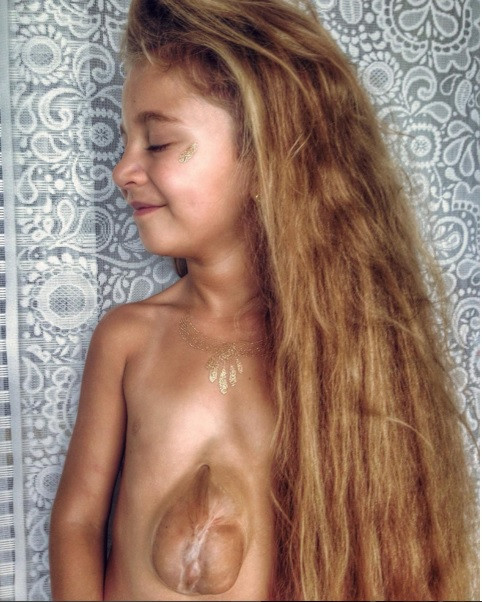What is Pentalogy of Cantrell? 8-year-old Russian girl's heart beats outside her chest
This rare condition is present at birth and is characterised by a combination of birth defects.

Virsaviya Borun, an eight-year-old Russian girl, suffers from a rare condition known as Pentalogy of Cantrell. This condition affects about six in a million people. She is currently in the United States to seek treatment.
Virsaviya's heart is only protected by a thin layer of skin. A part of her chest bones, a diaphragm and abdominal muscles are also missing, Straits Times reports.
A video posted on YouTube on 18 September shows Virsaviya's heart pushing out of her chest as she laughs. The video has received over 600,000 views.
She also featured in the BBC series Incredible Medicine: Dr Weston's Casebook in February this year.
"This is my heart. I'm the only one that has this," she said. "When I'm getting dressed, I put soft clothes on to not hurt my heart," the girl said.
"I walk around, I jump, I fly, I run, I'm not supposed to run but I love running."
Virsaviya's condition first came to light in the year 2015. Dari Borun, the girl's mother had launched a crowd funding campaign to raise money for her medical bills, according to Straits Times.
"It's not easy for Virsaviya to live with her heart on the outside because it's really fragile. She has to be careful as of course she can fall and it can be really dangerous - she can die from that," her mother said.
What is Pentalogy of Cantrell?
This rare condition is present at birth and is characterised by a combination of birth defects. The exact cause of this condition is not known and in most cases, it is believed to occur sporadically, according to the National Organisation for Rare Disorders (NORD).
The defects can involve five anomalies: Deficiency of the anterior diaphragm (muscle separating chest cavity from abdomen), a midline supraumbilical abdominal wall defect, a defect in the diaphragmatic pericardium, various congenital intracardiac abnormalities, and a defect of the lower sternum (breastbone). If all the five defects are present, it is referred to as a complete Pentalogy of Cantrell.
Signs and Symptoms:
The symptoms differ from person to person. Some infants may have mild defects with incomplete expression of the disorder while others may have serious, life-threatening complications. The affected infants may not necessarily have all of the symptoms.
The most severe expression of Pentalogy of Cantrell shows up at birth with ectopia cordis and omphalocele, according to NORD.
Ectopia cordis is a severe condition in which the heart is partially or completely outside of the thoracic cavity. In this condition, the heart is not protected by the chest wall and this disorder is quite often associated with pentalogy of Cantrell. Virsaviya's is suffering from Ectopia cordis.
Omphalocele is an abdominal wall defect in which parts of the intestines and abdominal organs of the infant stick out through the bellybutton. The intestines and organs are covered by a thin membrane or sac. The condition may be small, in which the intestines stick out, or large, in which both intestines and abdominal organs stick out.
According to NORD, another abnormality is the absence of the cartilage prominence at the end of the sternum. The others consist a hole in the heart, hole in the diaphragm, and more. These defects lead to the underdevelopment of the lungs that causes breathing difficulties. Blood vessel issues, and impaired function of the heart are other signs of this condition.
Infants with suffering from this disorder are at a risk of developing widespread internal infection of the abdominal cavity.



















